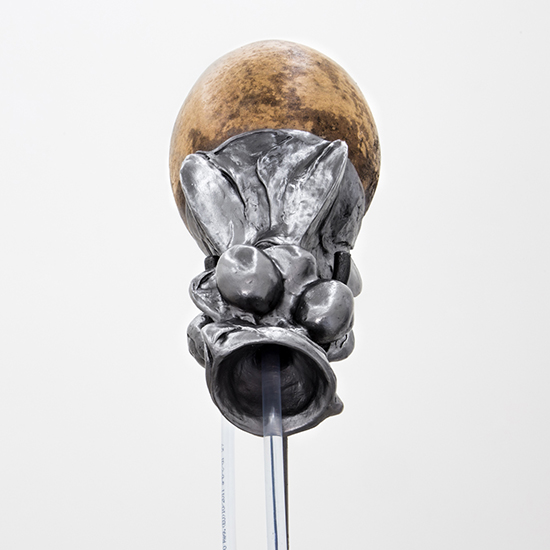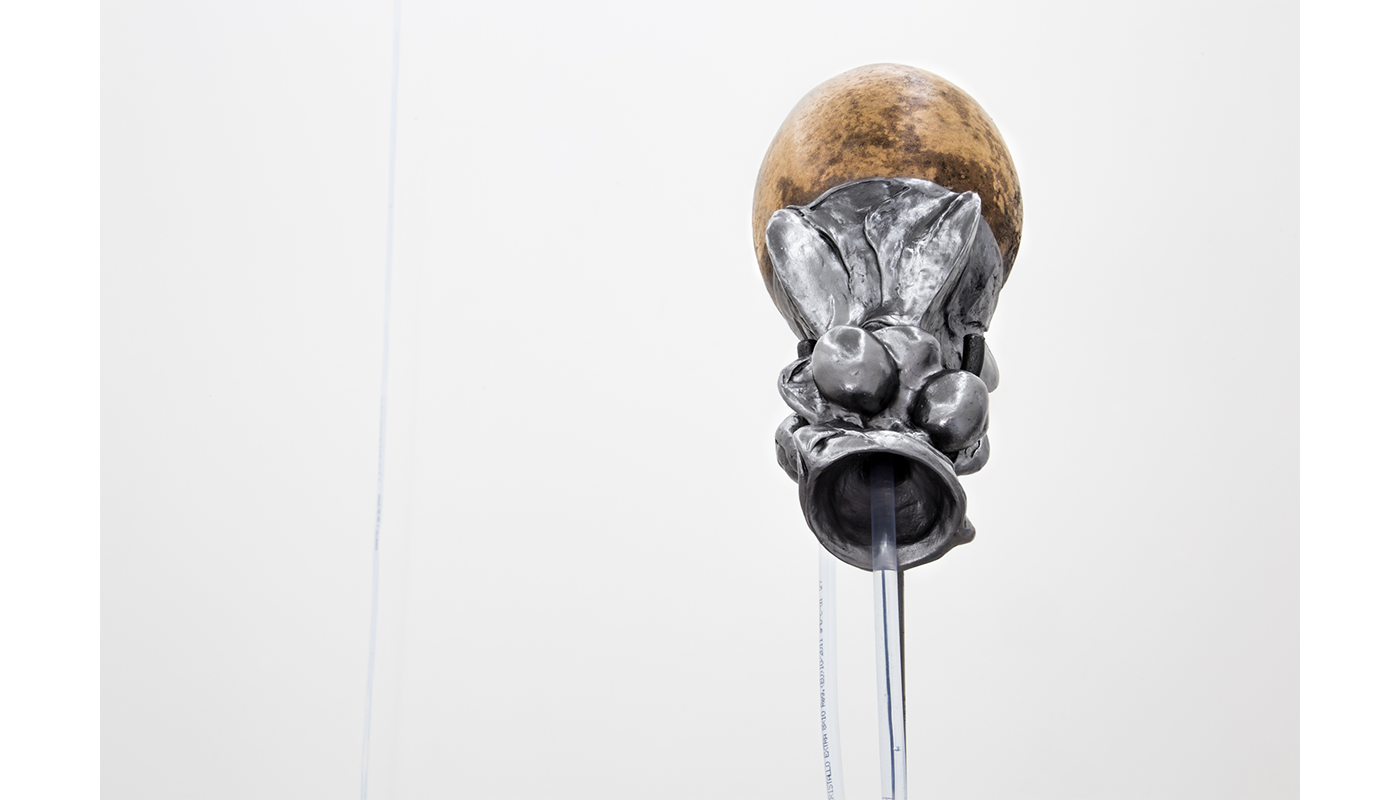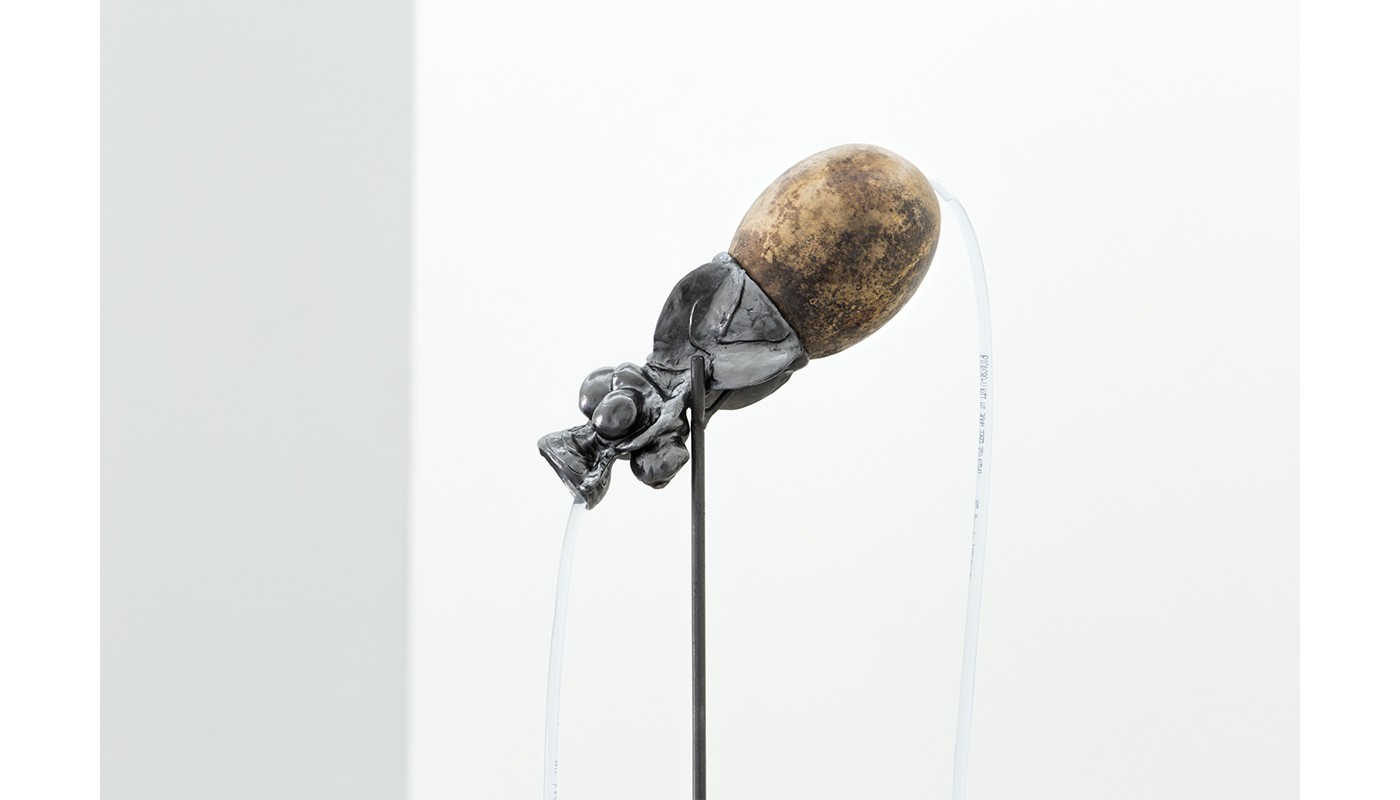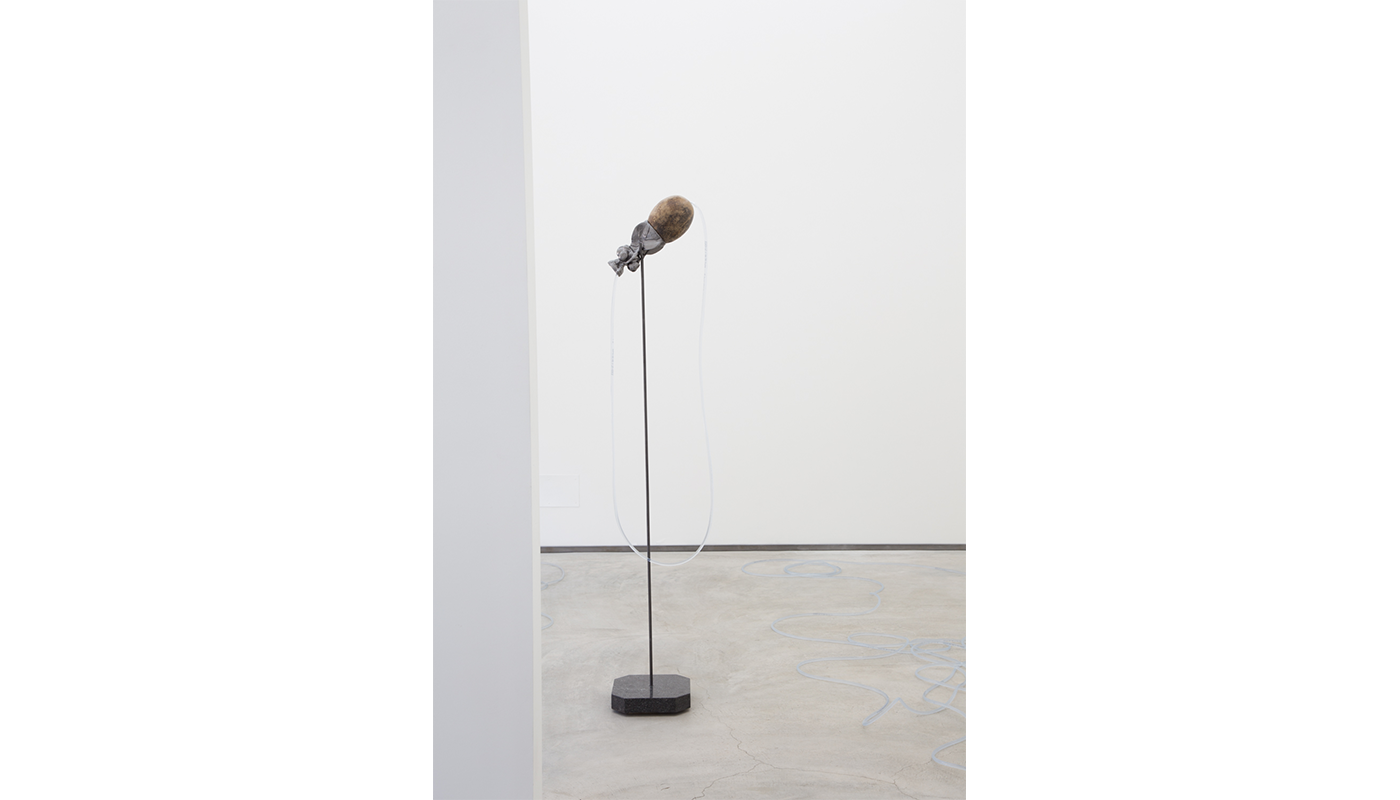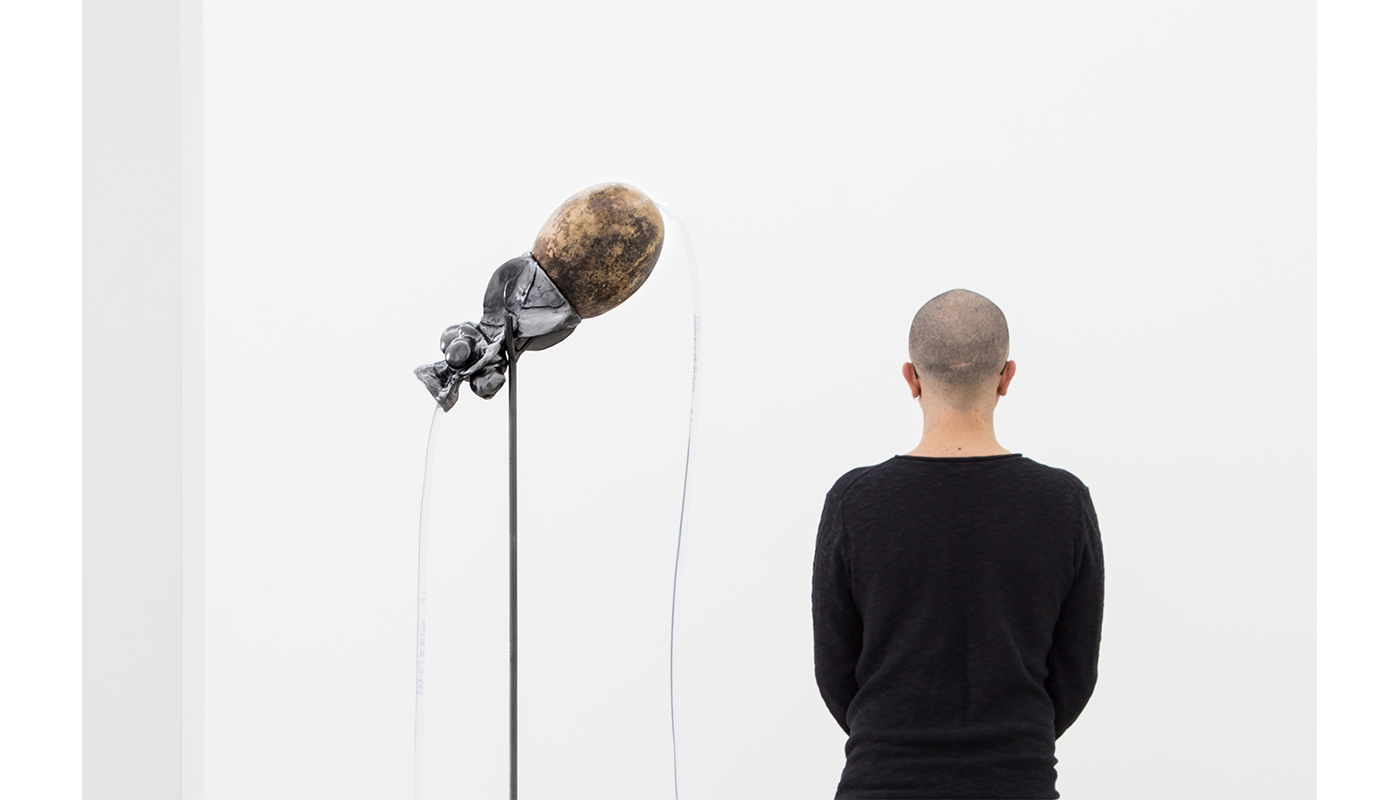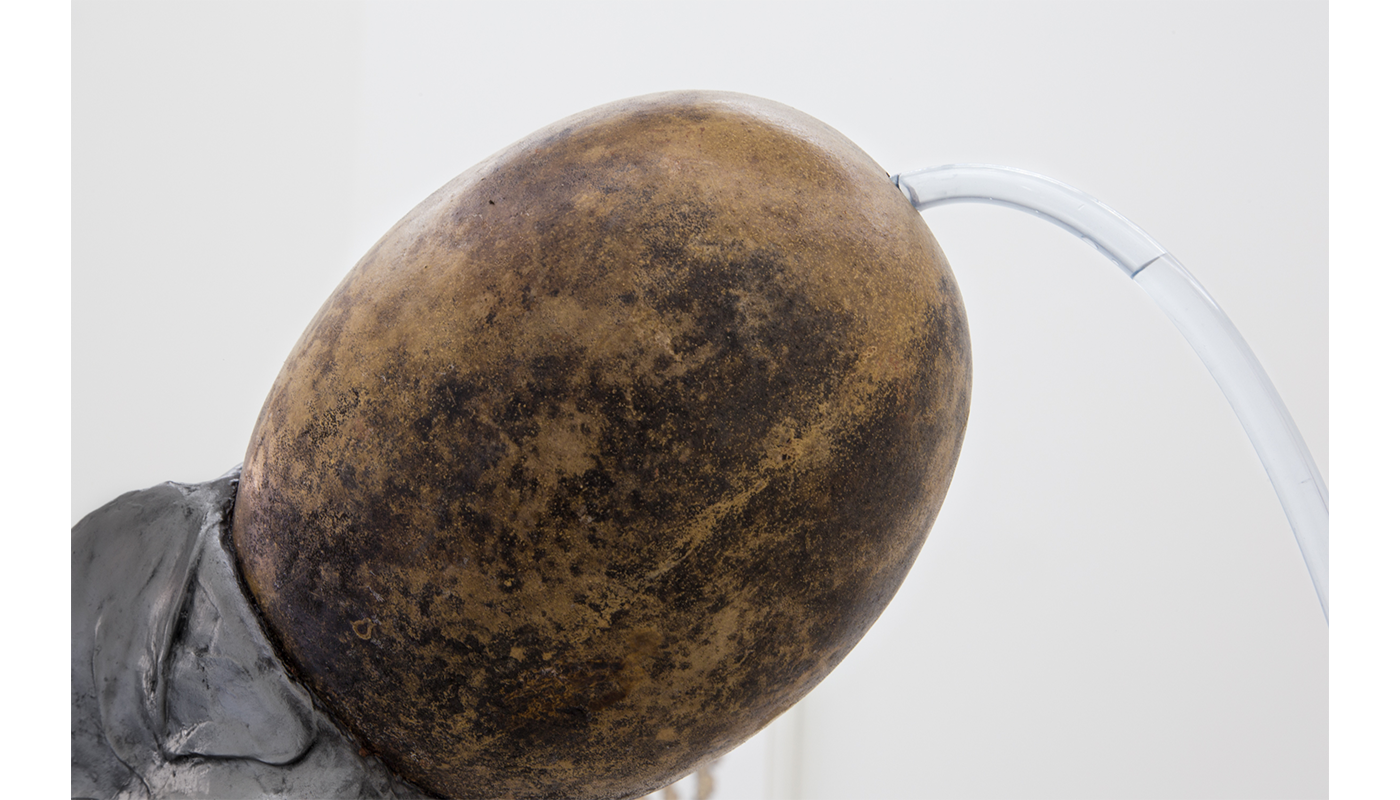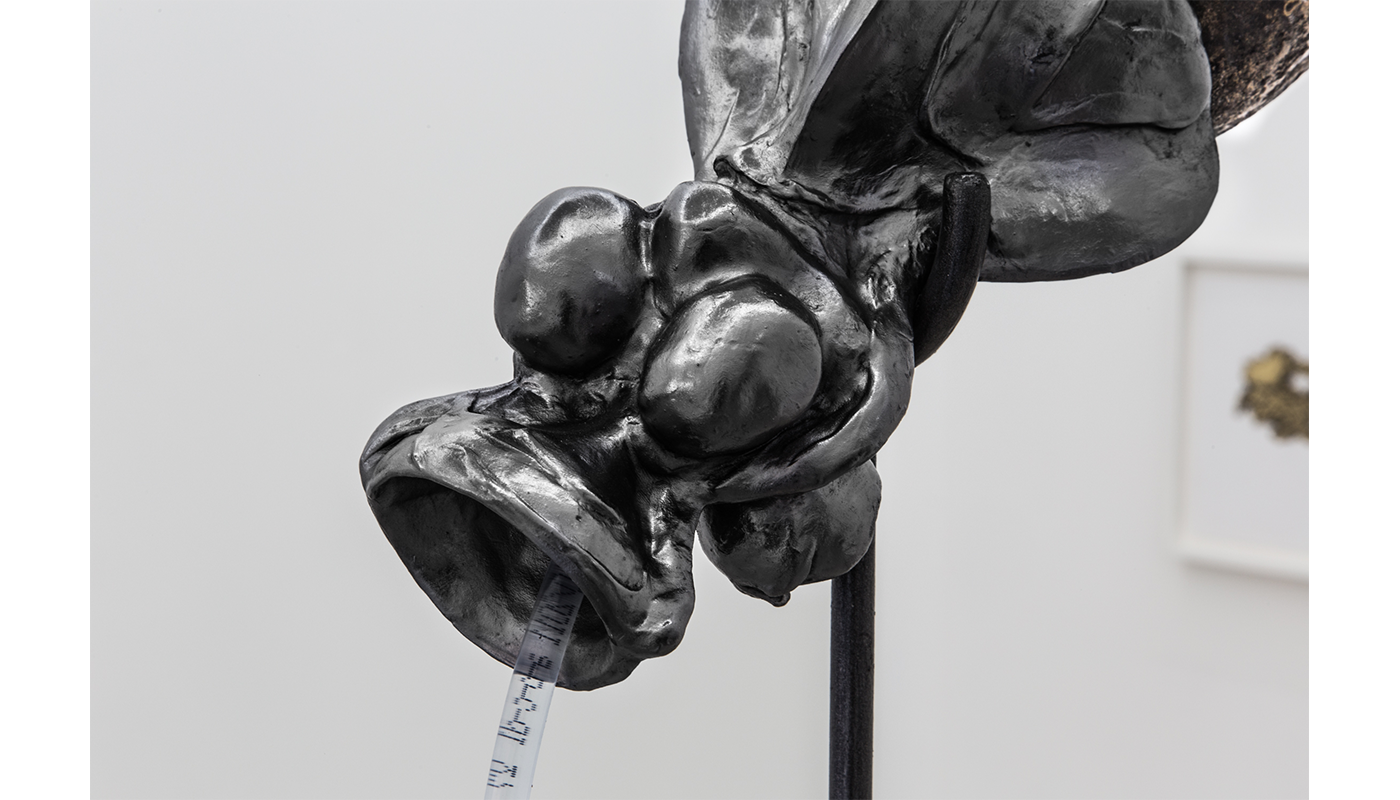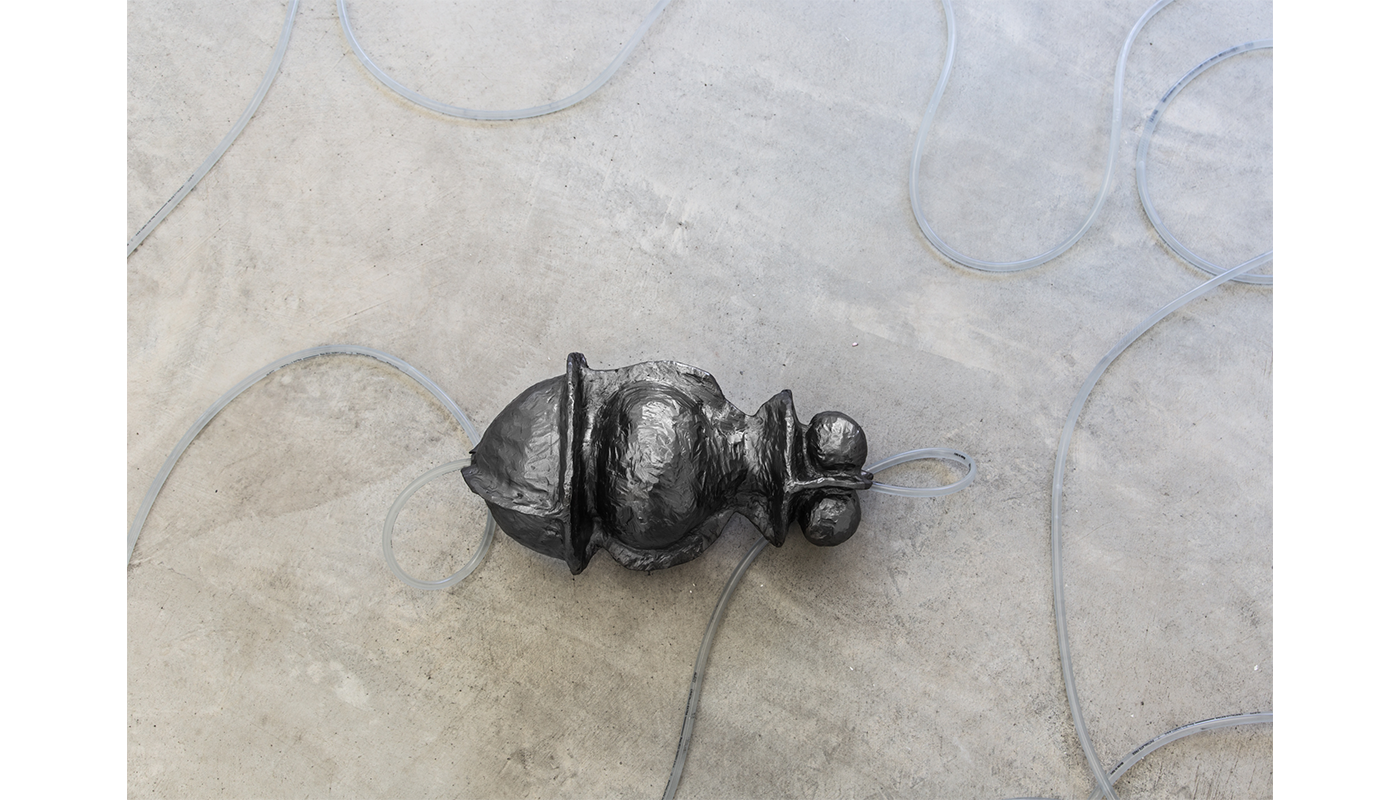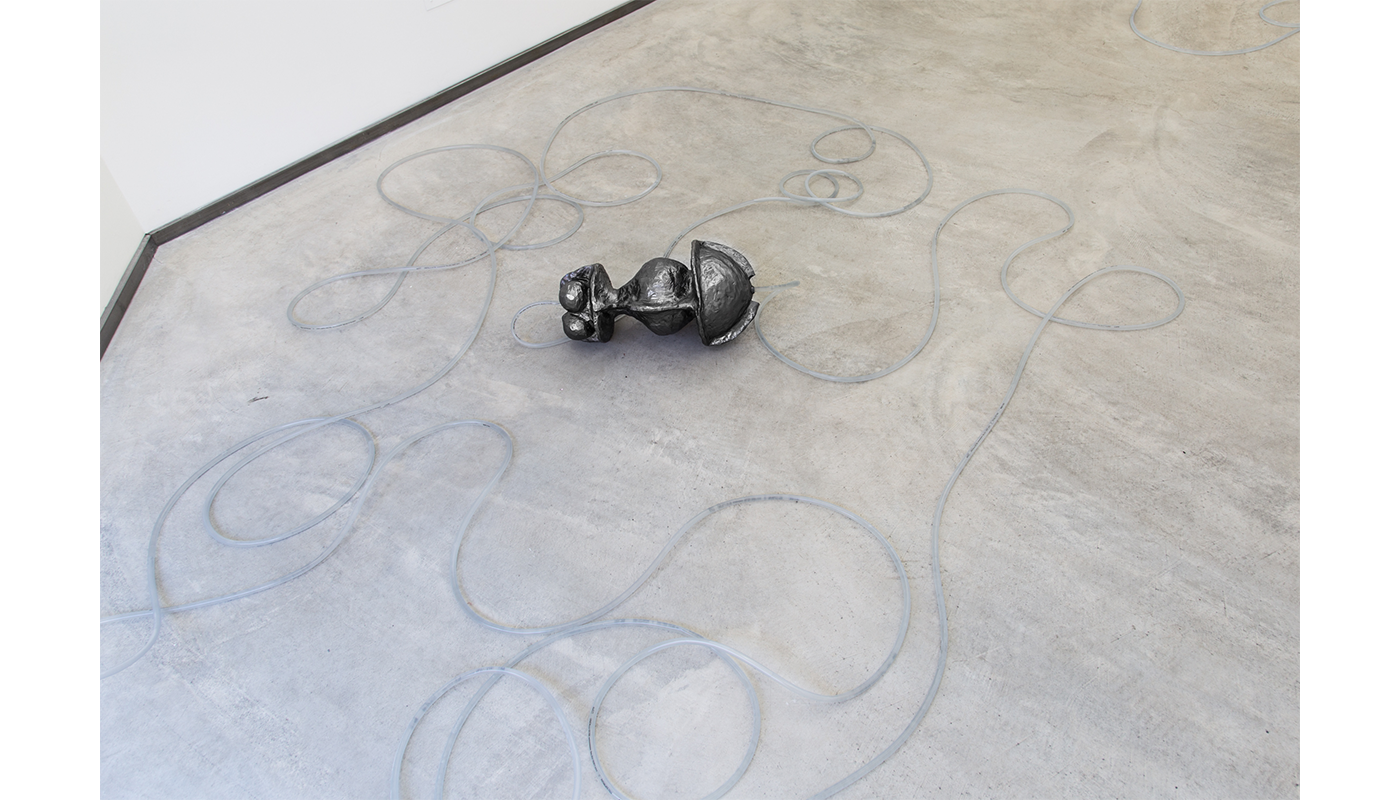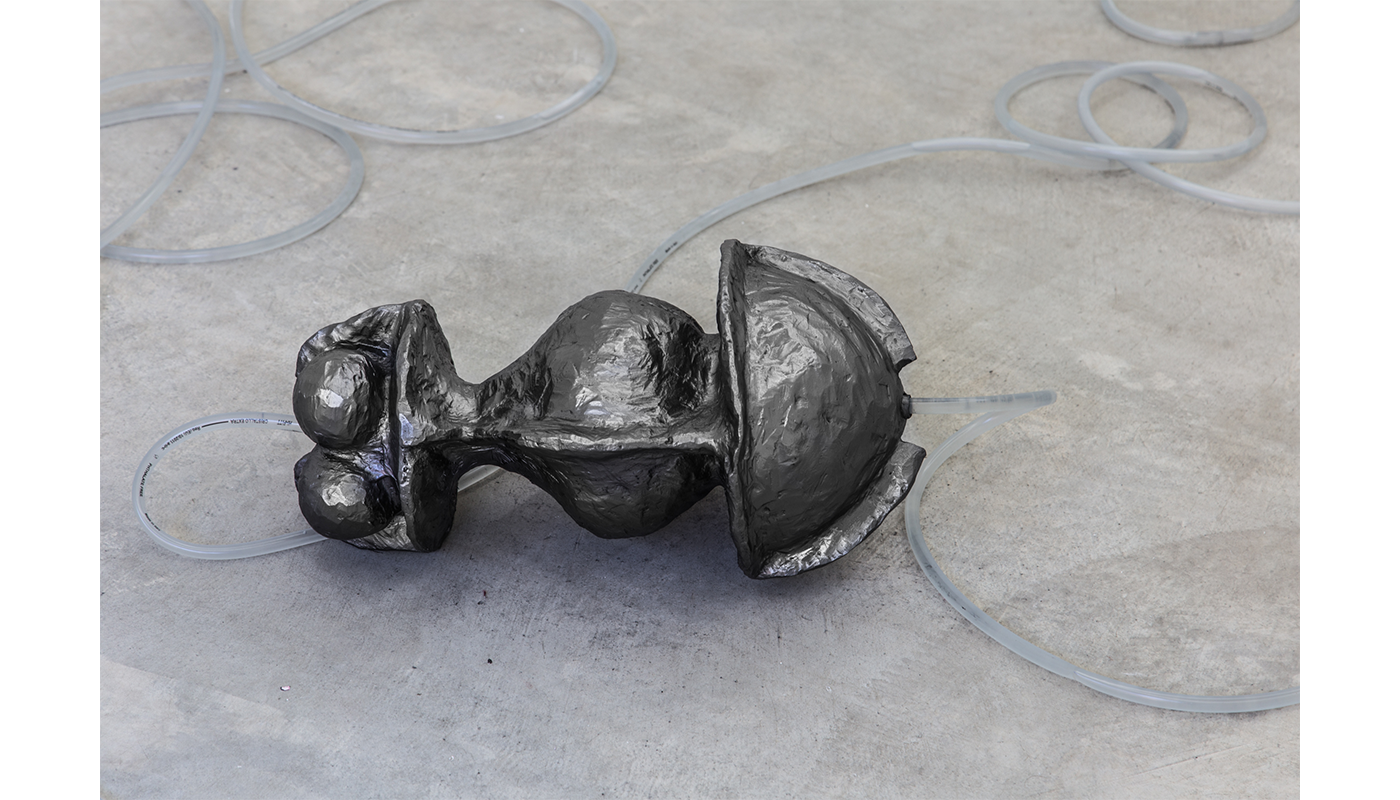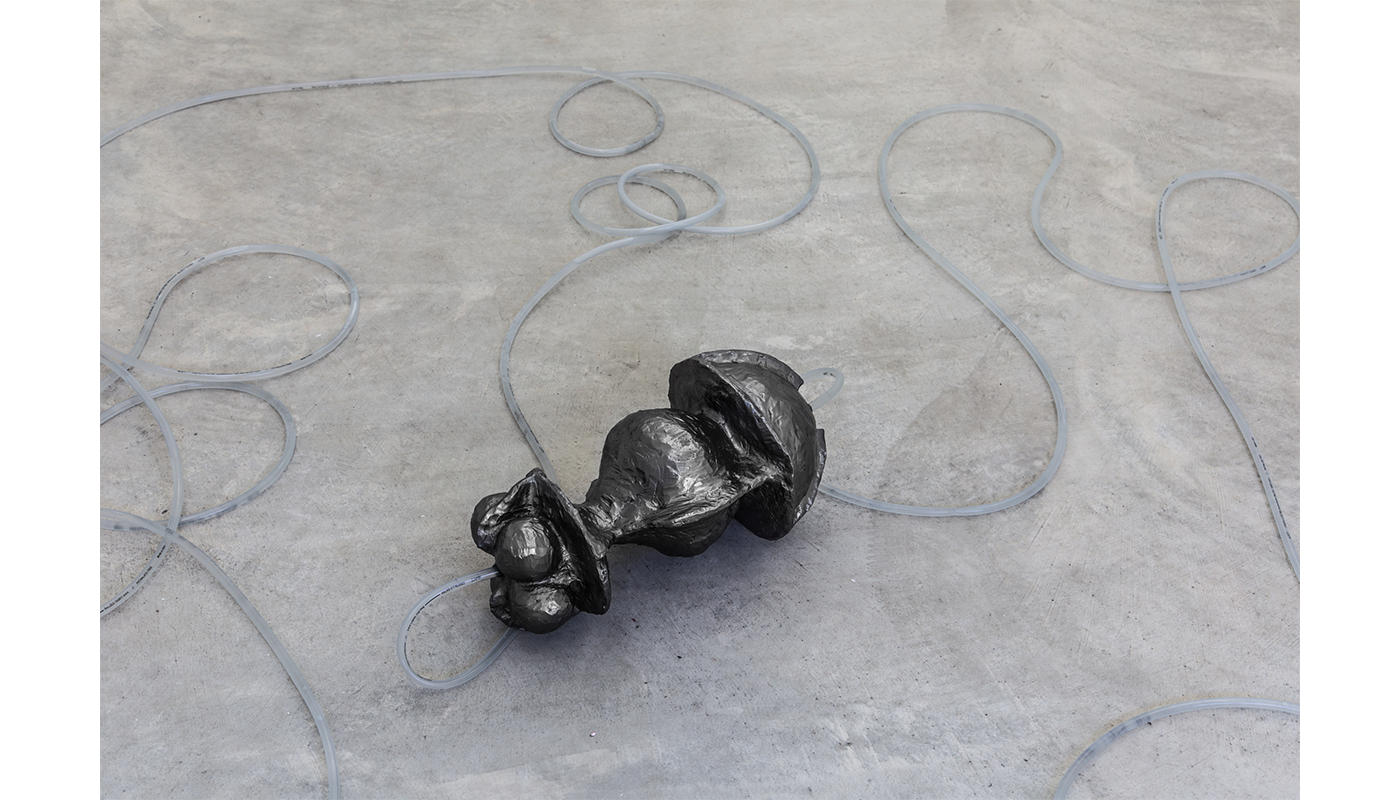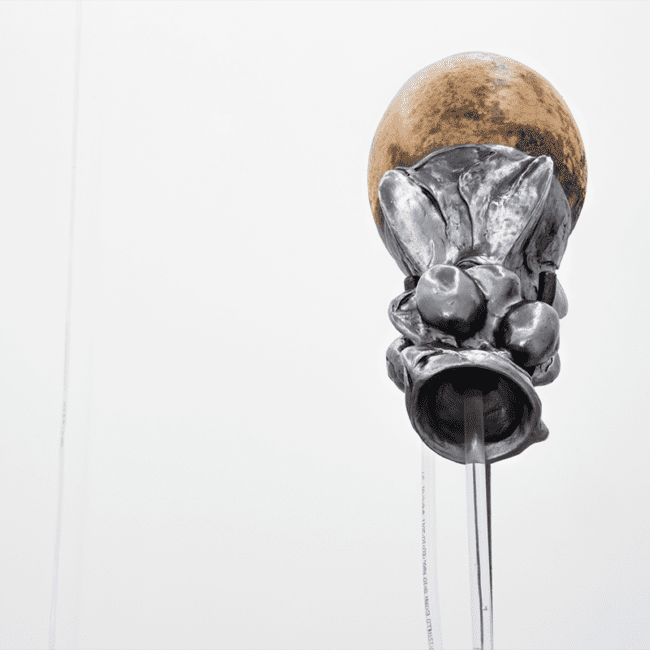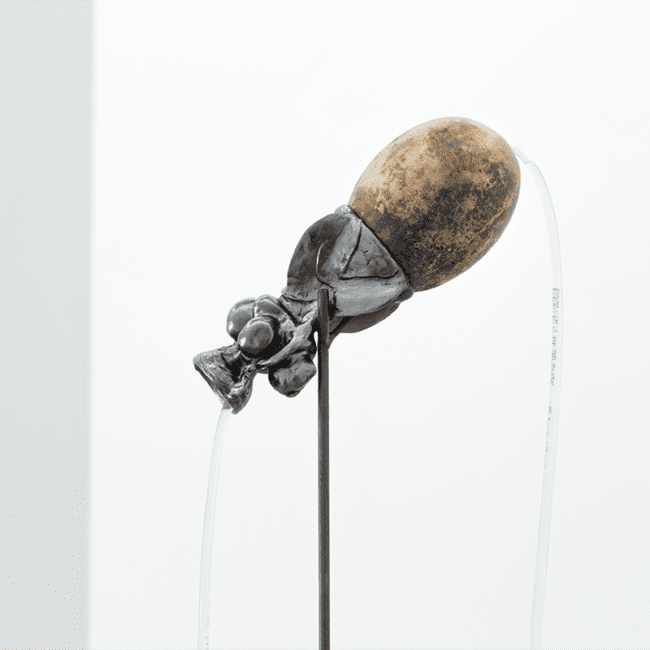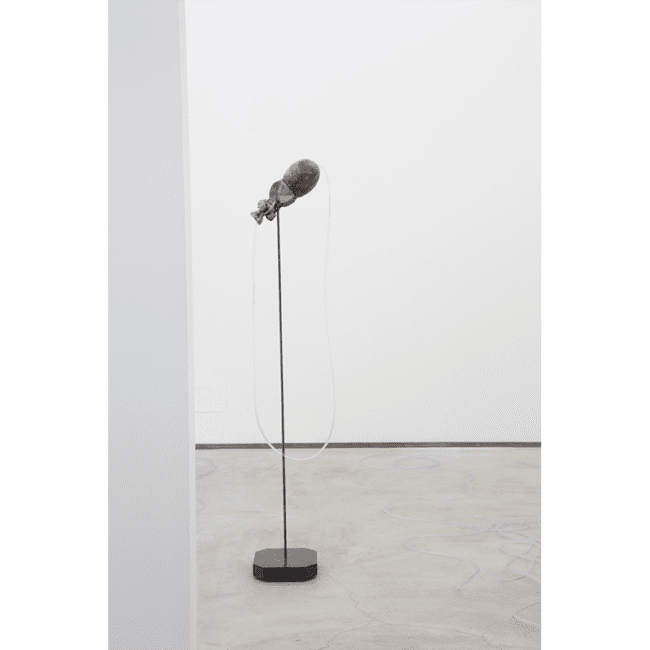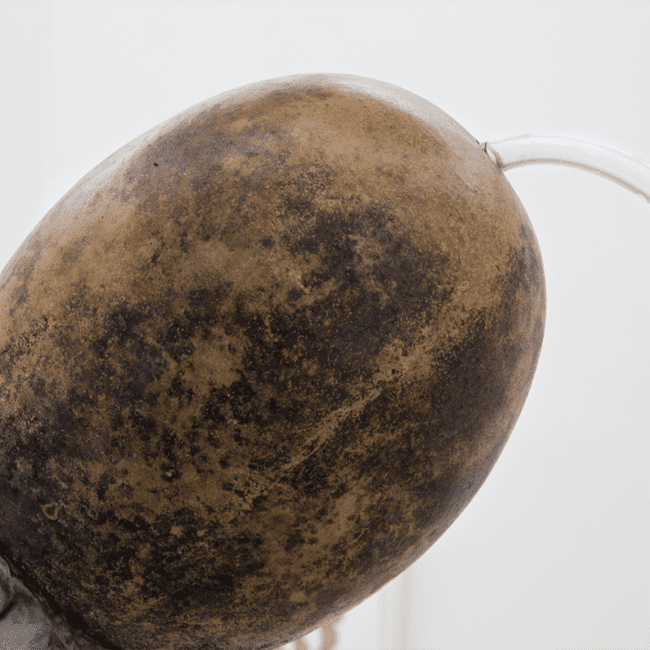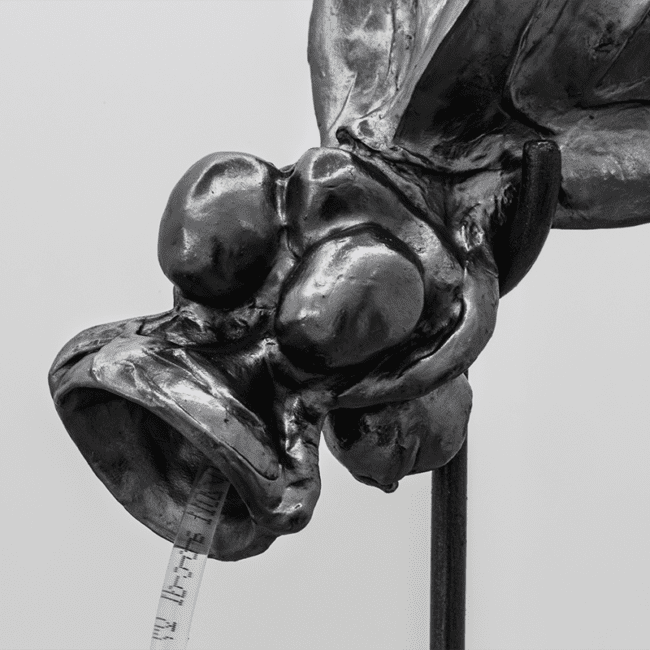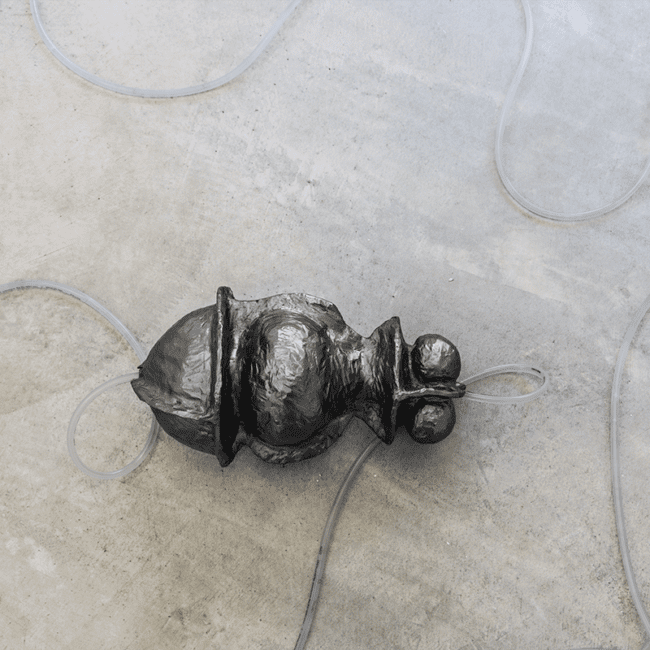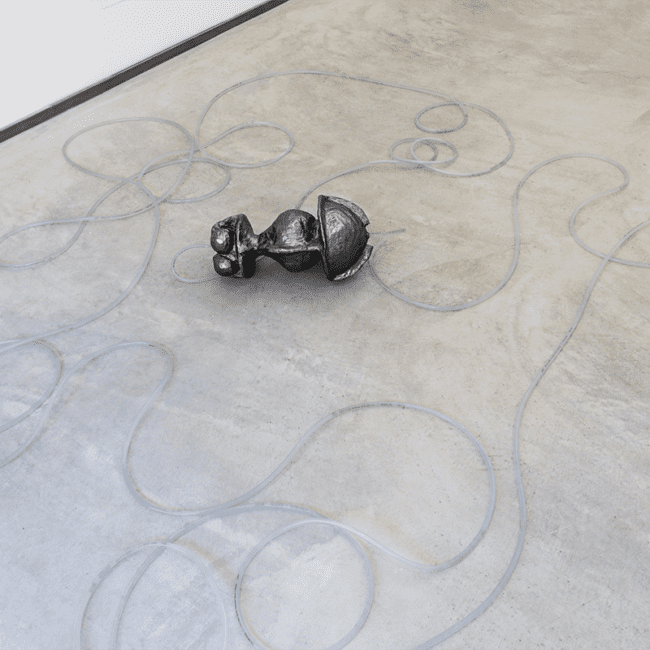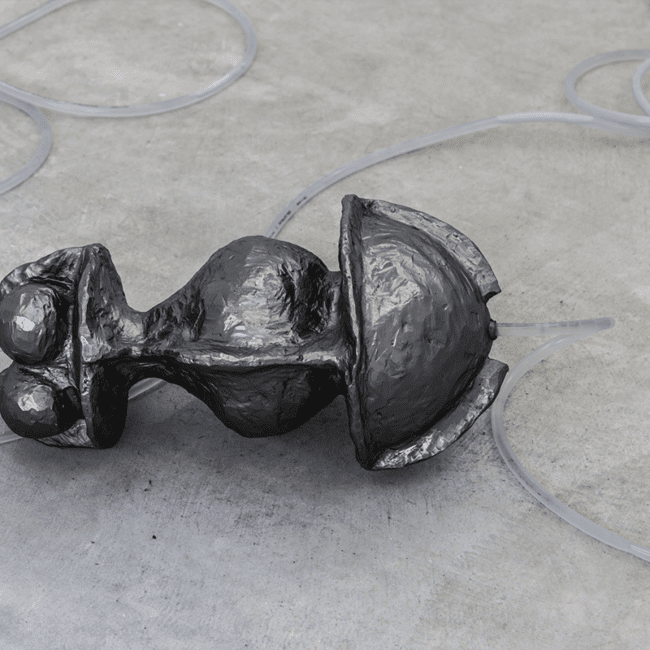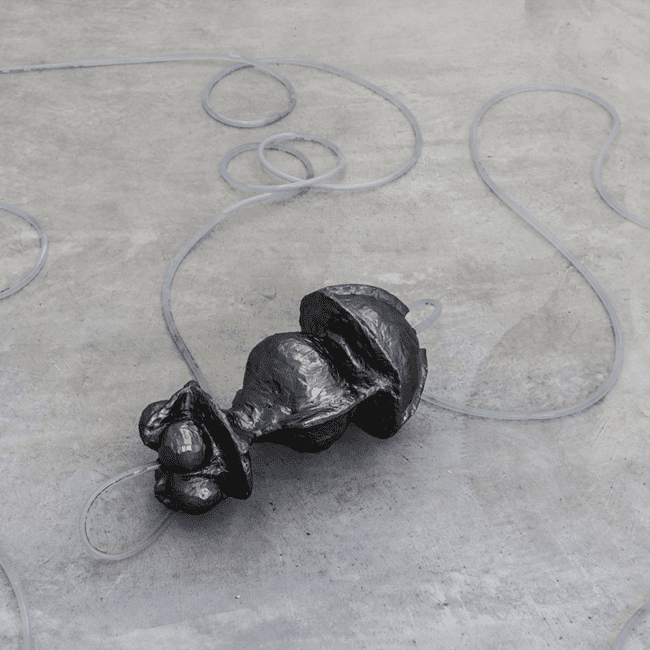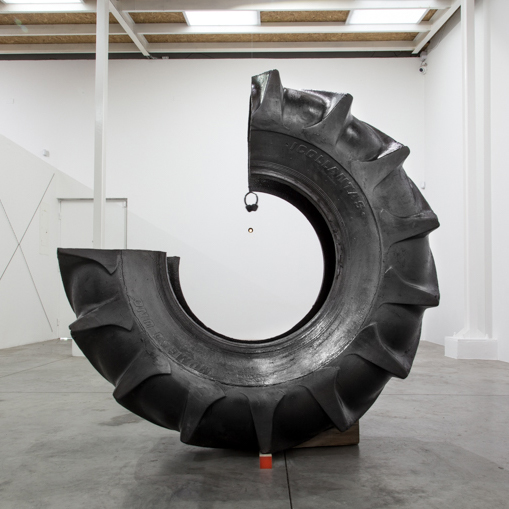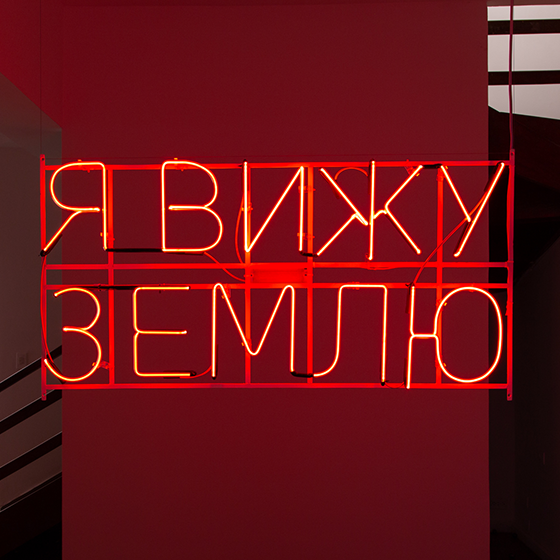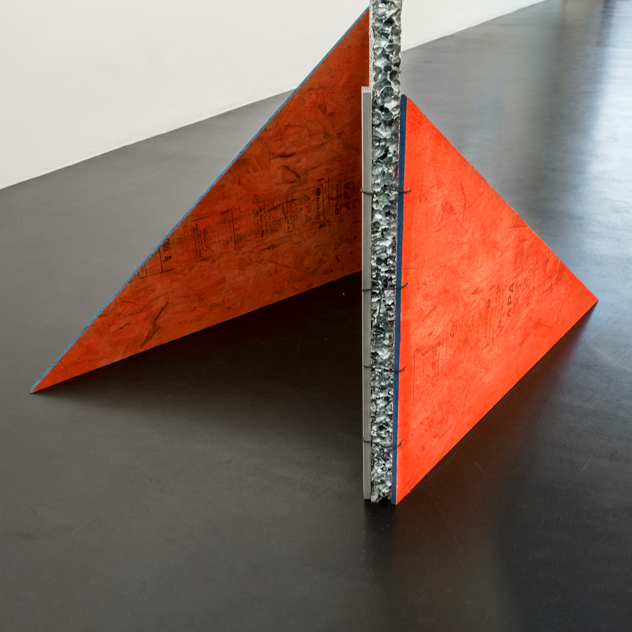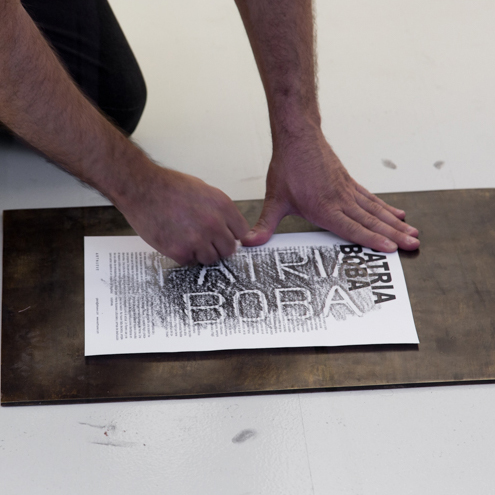Poporo (Totumo), 2020
Blackwaters of Milan, graphite, totumo, starch and metal.
45cm x 15cm x 15cm.
“Representations of receptacles for lime (Poporos), as it is presently used by the Indians in consuming coca, are to be found in gold ware from Colombia, both Muisca territory and the central Cordillera, and were probably intended for ritual use. The archaeological shape of a little gourd exhibit by these fold objects is practically the same as the of the lime containers of the Indians today in the Sierra Nevada of Santa Marta Colombia. There are some large anthropomorphic, zoomorphic and possibly Phytomorphic poporos.”
“According to an image prevailing among the Kogi (indigenous group from Sierra Nevada), the poporo symbolises a temple, and it is said that the “the temple is the poporo of the sun”, On certain days of the year, sunbeam falls through a hole at the top or the temple onto the hearth fires. This has a double meaning for the Kogi: on the one hand the sunbeam is a given phallus fertilising the temple as a uterus; and on the other hand the sun beam is the small stick that the Father inserts in his poporo to look for lime in the ashes of the fire.”
“In another image, the Sierra Nevada (snow cap mountain) is a Poporo; its snow covered peaks are white like the lime that accumulates around the opening of a poporo, and the small stick is the axis of the universe that pierces the mountain at this highest point. Lastly, the poor constitutes a cosmic model, and so a shaman or any initiated person may refer at length to the little gourd and the small stick to explain any number of cosmological matters.”
Fragments from: Reichel-Dolmatoff, G. (2006) Goldwork and Shamanism: An Iconographic Study of the Gold Museum of the Banco de la Republica, Colombia. 2nd edition. Bogota: Villegas Editores.
